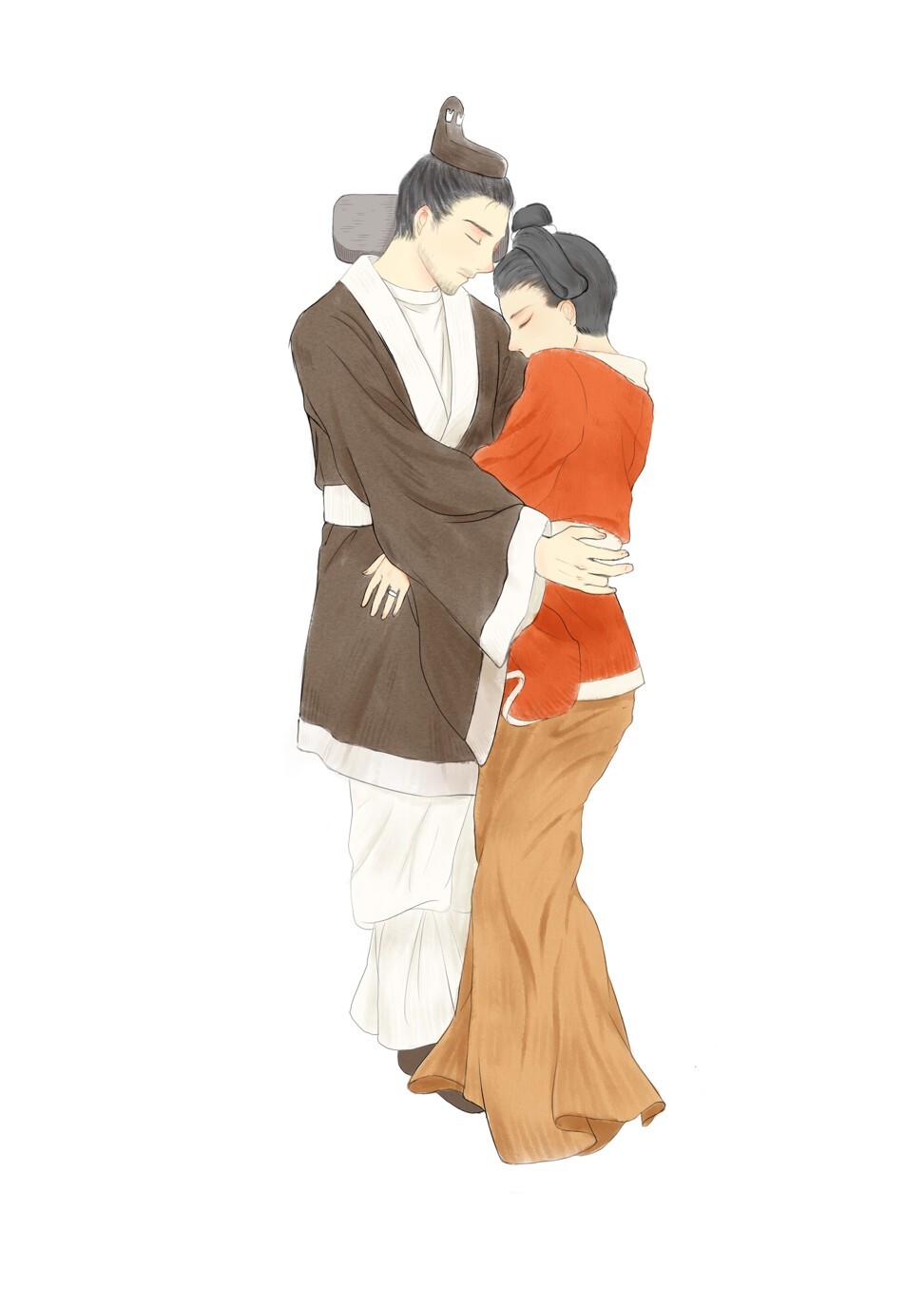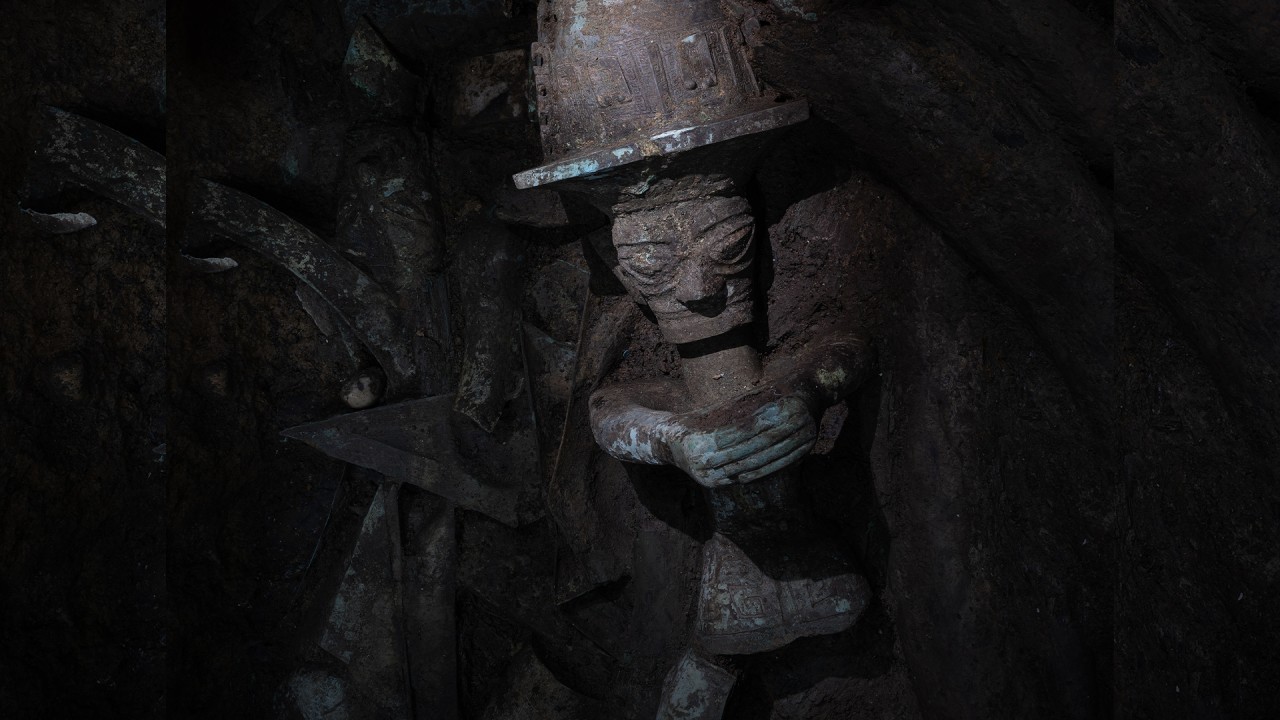
Chinese archaeologists discover ‘embracing lovers’, but it is the ring that intrigues
- Scientists discovered well-preserved skeletons of what looks like two embracing lovers
- The woman was wearing a band on her ring finger, begging the question of if it was a symbol of love

A scene of deep love and possible tragedy from over 1,500 years ago was discovered in northern China in 2020 during an excavation of over 600 tombs at a cemetery unearthed by a construction project.
According to a report on the findings, published in the International Journal of Osteoarchaeology this summer, archaeologists discovered the nearly complete skeletal remains of a couple who appear to be embracing before their death in Datong, in Shanxi province.
The scientists believe the couple lived during the Northern Wei dynasty (386-534), which covered much of modern-day north and central China.

The position of the two skeletons suggested a deep bond. The two were found lying on their side, with the woman appearing to nuzzle her nose into the man’s shoulder. Their arms were wrapped around one another, holding the other’s waist.
“The message was clear – husband and wife lay together, embracing each other for eternal love during the afterlife,” wrote the 10 authors, who hailed from Chinese and American research institutes.
While similar scenes have been found across the world, this is the first time two skeletons in this particular embrace have been discovered in China.
“Evidence of the direct materialisation of love in burials (such as the Taj Mahal) has been rare, and even rarer in skeletal form,” the scientists wrote.
Qun Zhang, an associate professor at the Institute of Anthropology at Xiamen University, who co-authored the paper, said: “During the Northern Wei era, Buddhism was popularised and people’s concepts of the afterlife became more abundant.”
The paper hypothesised the man died first and the woman might have killed herself to be buried with her lover. The idea is based on notable signs of trauma on the male skeleton and a lack of damage on the female.
However, the researchers did not rule out other possibilities, such as they died simultaneously because of illness or they were killed in a conflict and buried in an embrace soon after their deaths.
Zhang said, “the size, shape, structure, and orientation of the tombs indicate that the cemetery was used by commoners.”
One of the most intriguing details of the find was a metal band on the ring finger of the woman’s left hand.

04:27
Ancient Sanxingdui culture challenges traditional narrative of Chinese civilisation
Rings are common discoveries in archaeology, but scientists are reticent to associate them with a symbol of love or marriage, as they are typically used today.
But, given the context of the ring, the authors wrote: “This joint burial could be direct evidence of a full display of love and the importance of the rings in love.”
Another co-author of the study, Qian Wang, an associate professor at the Department of Biomedical Sciences at Texas A&M University, said the simplicity of the ring, which was silver and lacked engravings, signalled that it probably “did not cost that much”.
In China, evidence of the public display and pursuit of love emerged thousands of years ago in poems, art, literature and folklore. The paper cited the Shih Ching poems from the Zhou Dynasty (1046BC-256BC) as an example of ancient texts where themes of love are common.
Zhang said: “This discovery is a unique display of the human emotion of love in a burial, offering a rare glimpse of concepts of love, life, death, and the afterlife in northern China during a time of intense cultural and ethnic exchange.”